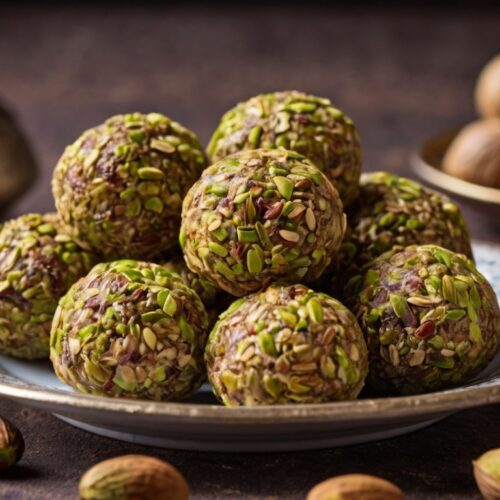When we think of ancient civilizations, we often picture grand temples, powerful kings, and early forms of writing. But what about their food? The people of Mesopotamia, one of the world’s first great civilizations, were not only masters of architecture and law but also skilled in the culinary arts.
One of the most fascinating examples of their culinary legacy is a confection known as mersu — a sweet, date-based treat that connects us to the distant past.
In this post, we’ll explore the historical significance of mersu, how it was recorded on ancient tablets, the importance of the date palm in Mesopotamian culture, and how you can recreate this ancient recipe in your own kitchen.
Where and When Mersu Was Recorded: The World’s Oldest Cookbook
The recipe for mersu comes to us from the Yale Babylonian Collection, one of the world’s most important collections of Mesopotamian literature. Among the treasures in this collection are three clay tablets that date back to around 1750 BCE, during the reign of Hammurabi, the famous king of the Old Babylonian Empire. These tablets are often referred to as the world’s oldest known cookbook.
However, calling these tablets a “cookbook” might be a bit misleading. Unlike modern cookbooks, these texts were not intended for widespread use or instruction. Instead, they were likely written for an elite audience, such as scribes or temple staff, and were used to record recipes for religious ceremonies or royal feasts. The recipes on these tablets include instructions for soups, stews, and pastries — and among them is mersu, a confection that seems to have been highly prized in ancient Mesopotamia.
We know from these texts that professional pastry chefs were dedicated to the production of mersu. The term appears to have been a general word for sweet confections, suggesting there were different versions of mersu with varying levels of complexity. Some may have been as simple as date-and-nut balls, while others could have included spices or special ingredients reserved for special occasions.
The Mesopotamian Civilization: A Culinary and Cultural Powerhouse
Mesopotamia, often called the “Cradle of Civilization,” was a region located between the Tigris and Euphrates rivers, in what is now modern-day Iraq. This ancient land was home to some of the world’s first cities, writing systems, and legal codes. The people of Mesopotamia were highly advanced in agriculture, trade, and governance, laying the foundations for many aspects of modern society.
Food played a central role in Mesopotamian life. The region’s fertile land allowed for the cultivation of a wide variety of crops, including barley, wheat, legumes, and, most importantly, dates. These ingredients formed the basis of the Mesopotamian diet and were often combined to create hearty meals and sweet treats like mersu.
The Importance of the Date Palm in Mesopotamian Culture
One of the most significant ingredients in mersu is dates, which were a staple food in ancient Mesopotamia. The date palm was regarded as sacred, and its fruit played an essential role in both the Mesopotamian diet and their spiritual practices.
The Sumerians, one of the earliest civilizations in Mesopotamia, associated the date palm with the fertility god Dumuzid (or Tammuz). Dates were seen as a divine gift that provided nourishment and energy. The tree itself, with its tall trunk and abundant fruit, symbolized fertility, abundance, and renewal. In religious ceremonies, offerings of dates and date wine were made to the gods, and the date palm often appeared in art and iconography.
The date palm’s importance extended beyond food. It was a versatile resource, providing wood for construction, leaves for weaving, and fibers for rope-making. This made it an essential part of everyday life, further reinforcing its sacred status.
Mersu Recipe: A Modern Adaptation
While the ancient texts don’t give us exact measurements or detailed instructions, we can recreate a simple version of mersu based on the ingredients mentioned in the tablets. Here’s a modern take on this ancient treat:
Pistachios I used in the recipe.

Mersu
Ingredients
- 1 cup pitted dates
- 3/4 cup pistachios or other nuts like almonds or walnuts
Instructions
Prepare the Dates:
- If your dates are dry, soak them in warm water for about 10 minutes to soften them. Drain and pat dry.
Grind the Nuts:
- Place the pistachios in a food processor and pulse until finely chopped. You want a texture similar to breadcrumbs.
Form the Mersu:
- Take a date and stuff it with a few pieces of chopped pistachios. Roll the date in more chopped pistachios until fully coated.
Serve:
- Enjoy your homemade mersu as a snack or dessert! These sweet, nutty bites are a delicious way to connect with history.
Video
Notes
- Nut Options: While pistachios are used in this recipe, you can substitute with walnuts, almonds, or hazelnuts based on your preference or what’s available.
- Texture Tip: If your dates are too dry, soak them in warm water for 10-15 minutes to soften them before stuffing and rolling.
- Serving Suggestion: Mersu can be served as a snack, dessert, or part of a historical-themed dinner, paired with honey or yogurt for a modern twist.